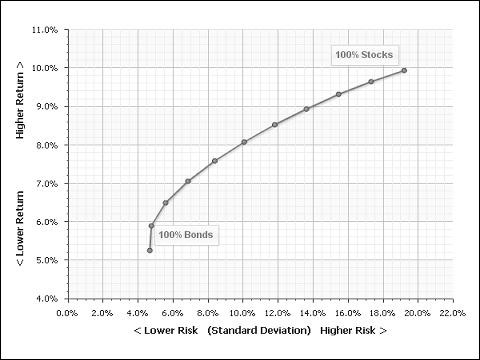Inflation can help an investment portfolio
Post on: 16 Июль, 2015 No Comment

Posted: May 03, 2011
Inflation is a tax on our wallets. We’re paying about $4 a gallon (or more) for gasoline, about as much for a gallon of milk, and feeling the effects of post-Civil War-high prices for cotton at clothing stores.
Instead of fearing inflation, why not embrace it in your portfolio? Let’s examine ways to play the trend and make money from inflation, specifically via exchange-traded funds.
One of the chief ways to wager on rising inflation used to be by buying TIPS (Treasury Inflation Protected Securities). With the advent of ETFs, however, investors have more outlets to play inflation. According to the National Stock Exchange (www.nsx.com ), there is now a record $1.06 trillion in ETF assets, in just over 1,000 funds.
Federal Reserve Chairman Ben S. Bernanke tried to calm American consumers last week by saying surging commodity prices are unlikely to induce significant inflation in labor costs, but that ignored the fact that food and fuel represent one-fifth of the Consumer Price Index.
Meanwhile, Procter & Gamble Co. and Kimberly-Clark Corp. America’s two largest makers of diapers, just announced they will pass on increasing pulp and paper prices to consumers. And United Technologies Corp. the world’s largest maker of air conditioners, increased prices to offset higher costs for copper.
Investors like Dan Weiskopf, of Global ETF Strategies in New York City, might not have a particular forecast on inflation beyond its moving higher, but Weiskopf, for one, remains concerned that the magnitude of the change will ultimately spook investors.
He noted that assets besides TIPS also were highly correlated with inflation, especially commodities, which tend to increase in price as investors seek havens in hard assets.
Some commodities ETFs — such as the SPDR Gold Trust (symbol: GLD), with $56 billion, and iShares Silver Trust (SLV), with $13.5 billion — are well-known hedges against inflation. Investors often put money in precious metals as paper currencies such as the U.S. dollar fall in value.
Other inflation-fighter ETFs are less well-known: ETFs Physical Precious Metals Basket Trust is an exchange-traded fund that aims to track the prices of gold, silver, platinum, and palladium bullion (symbol: GLTR).
Energy and agriculture exchange-traded funds are also inflation plays, Weiskopf says, including PowerShares DB Commodity Index Tracking Fund (symbol: DBC), United States Commodity Index Fund (USCI), PowerShares DB Oil Fund (DBO), PowerShares DB Agriculture Fund (DBA), and Claymore Global Agriculture ETF (COW).
Substituting dollar-denominated holdings for those in other currencies is another way to combat inflation and a weaker dollar in this country. These ETFs invest in local debt denominated in the currencies of emerging-market countries, not held in greenbacks. Examples include SPDR DB International Government Inflation-Protected Bond (symbol: WIP), WisdomTree Emerging Markets Local Debt Fund (ELD), and Market Vectors Emerging Markets Local Currency Bond ETF (EMLC).
Currency ETFs are complex and volatile, so investors should be careful when choosing a specific currency bet or a basket of currencies. Rydex is the largest issuer of these ETFs, but others include PowerShares DB US Dollar Index Bearish fund (symbol: UDN), designed to replicate being short the U.S. dollar against the following currencies: euro, Japanese yen, British pound, Canadian dollar, Swedish krona, and Swiss franc.
CurrencyShares Australian Dollar Trust (symbol: FXA) and Canadian Dollar Trust (FXC) are designed to reflect the price of dollars in the respective currencies. WisdomTree Dreyfus Emerging Currency Fund (CEW) seeks to mimic returns of money market rates in emerging-market countries and changes to their value relative to the U.S. dollar.
Health-care providers also show a high correlation to inflation. First Trust Health Care AlphaDEX Fund (symbol: FXH), Vanguard Health Care ETF (VHT), and iShares Dow Jones U.S. Healthcare Sector Index Fund (IYH) all track various health-care company indexes.
What about real estate? The paradox is that home prices remain soft, but there is potential for dividend increases through REITS (real estate investment trusts). Investors could look at Vanguard REIT ETF (symbol: VNQ) or the iShares Cohen & Steers Realty Majors Index Fund (IYR).
Not every investor believes ETFs are the best way to hedge against inflation. Mutual fund managers, for instance, often put their trust in companies and managements to hedge that inflation risk, rather than hedging themselves.
The best way to hedge against inflation is to invest in companies that can pass through higher costs or reinvest in future growth, said Serena Perin Vinton, comanager of the Franklin Growth Fund (symbol: FKGRX). To wit, the $5 billion mutual fund’s biggest holding is Apple, maker of the iPod and iPhone, for which consumers seem willing to pay any price.
But not every mutual fund worries about inflation, and, frankly, we’re not sure the Fed does, either. It recently assured Americans that the core rate of inflation — a measure excluding food and energy — is rising slowly, and that skyrocketing oil prices will retreat. Until then — and the Fed doesn’t know when then is — we have to stretch our dollars even further.
If inflation keeps going up? These ETFs may help ride the trend in your portfolio.
P.S. You’re not imagining it: Your paycheck actually does feel lighter. The CPI rose 2.7 percent for the 12 months ended in March, the fastest 12-month rate since December 2009. Average hourly earnings, however, fell 1 percent during the same period.
Erin Arvedlund is a finance reporter residing in Philadelphia. Contact her at 646-797-0759 or erinarvedlund@yahoo.com.














